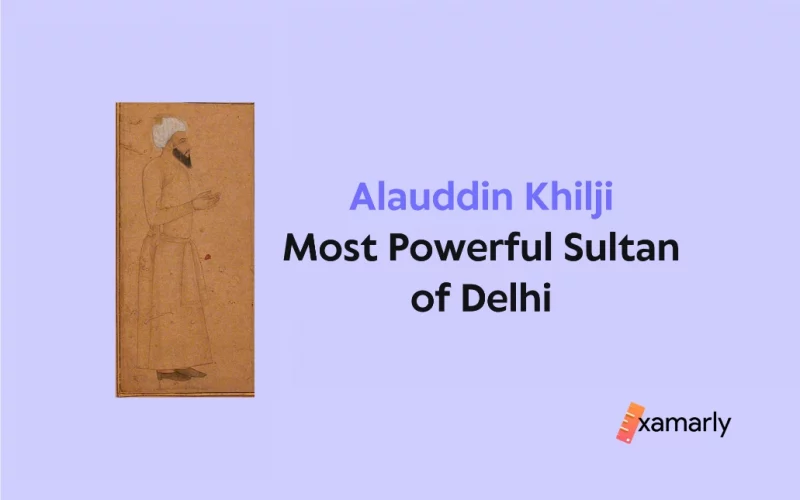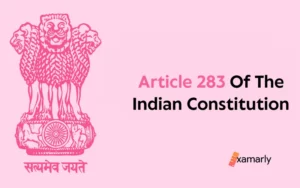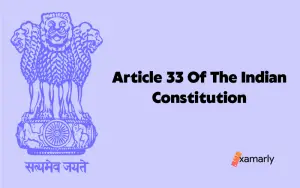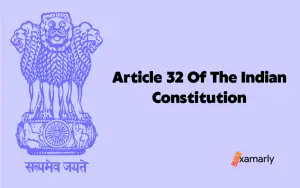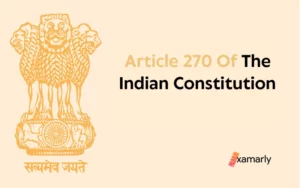The Khiljis were an important part of the Delhi Sultanate Dynasty. Alauddin Khilji was the Sultan of Delhi and among the most formidable rulers of the Khilji dynasty. He assassinated his father-in-law and strengthened his authority in Delhi.
The Indian imperial kingdom was only established by the one and only Muslim emperor, Alauddin Khilji. Beyond the Vindhyas and all the way to the Deccan, he expanded the sultanate of Delhi’s borders by conquering numerous Indian kingdoms.
History has commended Alauddin’s rule for its low pricing and effective market supply of products and services. He had a very effective administrative strategy. South India was initially attacked by him.
This article will talk in depth about Alauddin Khilji with UPSC point of view.
- Who was Alauddin Khilji?
- Alauddin Khilji's Reign
- Alauddin Khilji – Administration
- Invasion of the Mongols
- Alauddin Khilji's Expeditions
- Administrative & Domestic Policies
- Market Reforms
- Views of Amir Khusrau and Barani on Economic Reforms
- Modifications to the Levy/Revenue System
- Art and Architecture
- Military Reforms
- Alauddin Khilji's Obsession with Queen Padmavati
- Death of Alauddin Khilji
- Alauddin Khilji's Succession
- End of Khilji Dynasty
- Summary
- FAQs about Alauddin Khilji
Who was Alauddin Khilji?
- Ali Gurshasp was Alauddin Khilji’s given name at birth.
- He was Shihabuddin Mas’ud’s oldest son.
- After Shihabuddin’s passing, Jalaluddin raised Alauddin.
- The founder of the Khalji dynasty, Sultan Jalaluddin Khilji, had an older brother named Shihabuddin Mas’ud.
- He as well as Almas Beg (younger brother of Alauddin) wed the daughters of Jalaluddin.
- Upon Jalaluddin’s succession to the crown of Delhi, Alauddin was designated Amir-i-Tuzuk, and Almas Beg was given the rank of Akhur-beg.
- Ala-ud-din Khilji wears the crown after Jalal-ud-din in 1296 AD.
- To get everyone forget about Jalal-ud-din’s murder and support him, he lavishly distributed money and gold to them.
- Malik Kafur is believed to have poisoned Ala-ud-din Khilji, according to rumors.
- In January 1316, he passed away.
Our article on Delhi Sultanate Questions and Answers will take your UPSC history preparation to the next level.
Alauddin Khilji’s Reign
Alauddin Khilji was a powerful Sultan of the Delhi Sultanate who ruled from 1296 to 1316 CE. His reign was marked by significant military conquests, administrative reforms, and cultural patronage. Here are some key aspects of his reign:
- Military conquests: He was a successful military commander who launched several expeditions to expand his kingdom. He conquered Gujarat, Malwa, and Ranthambore, among other regions. He also defeated the Mongol armies that had invaded India.
- Administrative reforms: He is known for his administrative reforms, which were aimed at strengthening the central government and curbing the power of the nobility. He introduced the system of diwan-i-riyasat, which was responsible for collecting taxes and maintaining law and order. He also introduced the practice of measurement of land for tax collection. His market control policy aimed to regulate prices of commodities by fixing prices and prohibiting hoarding.
- Cultural patronage: He was a patron of art and literature, and he established several institutions of learning. He was also known for his love of music, poetry, and dance. He patronized the famous poet Amir Khusrau and invited several scholars and artists to his court.
- Social reforms: He introduced several social reforms aimed at improving the condition of women and protecting them from abuse. He banned the practice of sati and imposed severe punishments for rape and adultery.
Overall, his reign was marked by significant military conquests, administrative reforms, cultural patronage, and social reforms. However, his methods of governance were often harsh and authoritarian, and he was known for his strictness and cruelty towards his subjects.
Also read about another establishment of Alauddin Khilji: Diwan i Risalat.
Alauddin Khilji – Administration
Alauddin Khilji’s administration was marked by significant administrative reforms that aimed at strengthening the central government and curbing the power of the nobility. Here are some key aspects of his administration:
- Centralization of power: He believed in the centralization of power, and he established a strong central government. He abolished the office of naib-i-mamlakat (deputy ruler) and appointed loyalists as governors of provinces. He also established a spy network to monitor the activities of his officials.
- Revenue administration: He introduced several reforms in revenue administration to increase revenue collection. He introduced the system of measurement of land for tax collection and fixed the prices of commodities to regulate the market. He also introduced the practice of issuing token currency to control inflation.
- Military administration: He reorganized the army and introduced a new system of payment to soldiers. He paid soldiers in cash instead of land grants, which helped to maintain a strong and loyal army. He also introduced the practice of branding horses to prevent theft.
- Justice administration: He was known for his strictness towards criminals. He introduced severe punishments for crimes like theft, robbery, and adultery. He also established the office of diwan-i-mazalim (minister of justice) to hear appeals against the decisions of lower courts.
- Public works: He was known for his patronage of public works. He constructed several roads, bridges, and buildings, including the famous Alai Darwaza in Delhi.
Related Article: Delhi Sultanate Administration.
Invasion of the Mongols
It happened more than 12 times that Ala-ud-din was able to effectively repel a Mongol invasion of India.
Alauddin Khilji’s Expeditions
He started conquering numerous kingdoms after gaining the crown of Delhi. His various annexations are listed below:
1. Gujarat
- Upon taking power, he launched his first army assault.
- Even before ascending to the throne, he was aware of Gujarat’s poor economic condition; as a result, he thought it would be highly practical to attack Gujarat.
- During this period, “Karna” was the emperor of Gujarat.
- Fearing this attack, Karna escaped to Devagiri, a region of Maharashtra with his family to safeguard them.
- But as they were traveling, Alauddin had Deval Devi (daughter of Karna) wed to Khijr Khan after she had been apprehended.
- The slave Malik Kafur, who met Alauddin at this location, was crucial to the growth of the latter’s dominion.
- The territory of Gujarat was taken by two of his generals, Nusrat Khan and Ulugh Khan.
You might like to read about the Slave Dynasty that came to power in Delhi before the Khiljis.
2. Ranthambhore
- The Chauhan dynasty governed it and Hamirradeva was the ruler at that time.
- The then Ruler of the Chauhan dynasty provided shelter to “new Muslims”. Alauddin did not like this, so he launched an attack against Ranthambore.
- Alauddin triumphed over Hamir Deva in this conflict.
- In this combat, one among his main sardars, “Nusrat Khan,” was killed.
3. Chittor
- Because it was in the way of a commercial route to Gujarat, Chittor was conquered.
- Alauddin had the assistance of the renowned Sufi poet and scholar Amir Khusrau during this conflict.
- After this triumph, the fort was given the new name of Khijrabad.
- Khijr Khan, the son of Alauddin, served as its inspiration for naming.
- He then took over the provinces of Chanderi, Dhar, Malwa, Mandu, Marwar, Jalor, and Ujjain.
After that, he began advancing towards South India.
4. Devgiri
- Ramachandra, a king of the Yadav dynasty, governed during this time.
- Ramdev’s refusal to pay Alauddin’s annual tax led to an assault on the empire of Devgiri.
- Ramdev was carried to Delhi, where he ultimately gave himself up.
5. Warangal/Telangana
- Prataparudra, the regional emperor, was the monarch of the dynasty named Kakatiya.
- His empire was incredibly wealthy, which eventually led to Alauddin’s attack.
- He embraced Alauddin’s reign and gave him the Kohinoor diamond.
- Prataparudra-II of Warangal, Vira Ballala-III, monarch of the Hoysala empire, Ramachandra Deva, king of the Yadava kingdom of Devagiri, all fell to Alauddin’s attack.
You might also like to read about: Female Freedom Fighters of Telangana.
6. Dwar Samudra
- Geographically, it was located on the state of Karnataka’s west coast.
- Ballal III of the Hoysala dynasty governed it.
Read Also: Women Freedom Fighters of Karnataka.
7. Madurai
- It was governed by the Pandya dynasty under the reign of Sundar as well as Vir Pandya.
- Sundar Pandya and Vir Pandya got into a dispute.
- Alauddin was approached for assistance by Sundar Pandya throughout this course.
- Together with Alauddin, Sundar Pandya defeated Vir Pandya.
- Alauddin’s rule was also accepted by Sundar Pandya.
Malik Kafur served as the commander of all South Indian Triumphs.
Alauddin Khilji’s rule was acknowledged by the southern kingdoms, and they presented him with monetary tributes.
You might also like to read about: South Indian Women Freedom Fighters.
Administrative & Domestic Policies
- Ala-ud-din adhered to the Divine Right Theory of Kingship.
- In order to stop recurring uprisings, he enacted four ordinances.
- He held onto free grants of lands and pious grants.
- He completely redesigned the spy mechanism.
- He outlawed drinking wine and attending social gatherings.
- He instituted a perpetual standing army.
- He was the first recorded king to institute a system of branding of horses and a precise descriptive roster of individual soldiers to prevent corruption.
- He set the pricing of essential goods below the normal market rates with detailed regulations.
- He exclusively advocated for the outlawed of black marketing.
- Revenue was collected under his rule in cash rather than in kind, in contrast to earlier kings.
- The Jizya, a grazing tax, and a house tax were all imposed on the Hindu community under his rule, and he steadfastly adhered to policies that were discriminatory towards the Hindu community.
- The Sultan was at the top of the chain of command. The Ulemas, or Muslim divines, had a significant role in the formulation of policy under earlier Muslim kings who governed in accordance with Koranic principles.
If you like reading about Indian history, and are thinking of taking it as an optional for UPSC, our following blogs will be super helpful for you:
- How to Choose Optional Subject for UPSC.
- History Optional for UPSC.
- History Optional Syllabus for UPSC.
Market Reforms
- Initially, Ala-ud-din Khilji instituted a cash-only method of paying soldiers.
- Because troops received lower pay, prices had to be monitored and controlled.
- To control the price of essential commodities, he set up a complex intelligence network to gather data on stockpiling and black selling.
- Officers known as Diwan-i-Riyasat were chosen to work in the offices of the Shahana-i-mandi in order to standardise the market.
- Before selling their products at the set prices, he ensured to it that all the market-interested merchants registered in Shahana-i-mandi.
- Shahana-i-mandi, the market’s supervisor, kept an eye on the costs of essential goods.
Read Also: Iqta System in Delhi Sultanate.
Views of Amir Khusrau and Barani on Economic Reforms
For a number of market items, Alauddin put in place price control methods.
- Amir Khusrau, an advisor to Alauddin, and the author Hamid Qalandar, who lived in the 14th century, both assert that Alauddin made these measures for the benefit of the populace.
- However, according to Barani, Alauddin sought to lower the costs so that his soldiers would accept poor salaries and keep up a sizable army. Barani further asserts that Hindu traders engaged in plundering and that Alauddin’s market reforms were a result of the Sultan’s intention to punish Hindus.
Modifications to the Levy/Revenue System
- Alauddin founded Diwan-i-Muskharaj, a distinct revenue organization.
- He devised a systematic method for determining land revenue & income and measuring land area.
- Jaziya was compelled upon non-Muslims.
- Ulemas, sardars, and jagirdars all had to pay heavy taxes.
Art and Architecture
- Ala-ud-din Khilji introduced a standing army structure for the first time under the Khilji Dynasty.
- The Alai Darwaza, the Palace of a Thousand Pillars & the Siri Fort are all his plans.
- Alauddin built the 70-acre Hauz-i-Alai (eventually Hauz-i-Khas) water reservoir in1296. This water reservoir provided water supply for the entire year to the city, as per Timur’s autobiographical chronicles, who conquered Delhi in 1398.
- In addition, he began work on the Alai Minar, whose size was planned to be twice that of the Qutub Minar. However, the project was likely halted when he passed away.
- Due to similarities in architecture and design between it and the Alai Darwaza, the Lal Mahal (Red Palace) which is a sandstone edifice at Chausath Khamba was also credited to Alauddin.
Also Read:
Military Reforms
Ala-ud-din Khilji was a successful military commander and introduced several military reforms that helped him to maintain a strong and loyal army. Here are some key aspects of his military reforms:
- Organization of the army: He reorganized the army and introduced a new system of payment to soldiers. He paid soldiers in cash instead of land grants, which helped to maintain a strong and loyal army. He also introduced the practice of branding horses to prevent theft.
- Recruitment and training: He introduced a new system of recruitment that was based on merit. He recruited soldiers from all over India, irrespective of their religion or caste. He also established a military school in Delhi to train soldiers in the art of warfare.
- Expansion of the army: He expanded the size of the army and introduced several new units, including the Khassadar (personal guard) and the Harkaras (messengers). He also introduced the practice of raising new units during times of war.
- Use of new weapons: He was known for his use of new weapons in warfare. He introduced the use of rockets, which were made by combining saltpetre, sulfur, and charcoal. He also introduced the use of siege engines, such as the mangonel and the trebuchet.
- Strategic planning: He was a master of strategic planning and used his military acumen to win battles. He used his spies to gather intelligence about his enemies and used surprise attacks to catch them off guard. He also introduced the practice of using decoys and false flags to confuse his enemies.
If you’re having a tough time with History, our blog on How to Study History for UPSC will help you.
Alauddin Khilji’s Obsession with Queen Padmavati
The story of Alauddin Khilji’s obsession with Queen Padmavati is a part of folklore and has been popularized by the epic poem “Padmavat” by Malik Muhammad Jayasi. However, it is important to note that the historical accuracy of this story is debatable and has been subject to much controversy.
According to the legend, Alauddin Khilji was obsessed with Queen Padmavati, who was the wife of King Ratansen of Chittor. He learned about her beauty and grace from a Brahmin priest named Raghav Chetan, who was banished from the kingdom for his misdeeds. Alauddin Khilji invited Raghav Chetan to his court and learned more about Padmavati. He then decided to attack Chittor to capture her.
When Alauddin Khilji reached Chittor, King Ratansen refused to surrender Padmavati to him. In the ensuing battle, King Ratansen was killed, and Padmavati and other women of the kingdom committed jauhar (mass suicide by self-immolation) to protect their honor.
While the story of Alauddin Khilji’s obsession with Padmavati has been popularized in modern times, there is little evidence to suggest that it was true. Historical records suggest that Alauddin Khilji was a ruthless and ambitious ruler who was more concerned with expanding his empire and consolidating his power than with individual women.
Death of Alauddin Khilji
The death of Alauddin Khilji, one of the most powerful and ruthless rulers of the Delhi Sultanate, is shrouded in mystery and speculation. There are several accounts of how he died, but it is difficult to determine which one is accurate.
- One account suggests that he was suffering from a chronic illness, possibly tuberculosis, towards the end of his life. His health deteriorated rapidly, and he died in 1316 at the age of 70. Another account suggests that he was poisoned by his own advisor, Malik Kafur, who had ambitions of becoming the Sultan himself.
- According to some sources, Malik Kafur was his trusted advisor and commander of his army. However, Malik Kafur was also known for his ambitious and manipulative nature. Some historians believe that he poisoned Alauddin to gain the throne for himself.
- Another account suggests that he was assassinated by his own guards, who were unhappy with his tyrannical rule and wanted to overthrow him. This theory is supported by the fact that he had become increasingly unpopular towards the end of his reign, and many of his subjects resented his harsh and oppressive policies.
Whatever the cause of his death, his legacy is one of power and ruthlessness. He was a successful military commander and ruler who expanded the Delhi Sultanate to its greatest extent. However, his methods were often cruel and oppressive, and he was known for his brutal treatment of his enemies and subjects alike.
Also read about the son of Alauddin Khilji: Shihabuddin Omar.
Alauddin Khilji’s Succession
The question of succession was a contentious issue during his reign. Alauddin had appointed his general & advisor, Malik Kafur, as his heir. However, this decision was not accepted by all of his advisors and courtiers.
After his death in 1316, Malik Kafur became the Sultan but faced opposition from other nobles who had their own candidates for the throne. He tried to consolidate his power by executing several of his rivals, but this only fueled the discontent among the nobles.
The opposition to his rule came to a head when one of Alauddin’s loyal advisors declared himself the Sultan and marched on Delhi with his army. In the ensuing battle, Malik Kafur was defeated, and the latter became the new Sultan.
However, his rule was short-lived. He was later deposed by his own nephew, Alauddin Khilji’s son, Qutb-ud-din Mubarak Shah, who had the support of the nobles. Qutbuddin Mubarak Shah became the new Sultan and ruled for a brief period before he was overthrown by another noble, Ghiyasuddin Tughlaq.
In conclusion, his succession was marked by turmoil and conflict, with different factions vying for power and influence. While Malik Kafur was appointed as the heir, his rule was short-lived, and the throne changed hands several times before the establishment of the Tughlaq dynasty.
You might also like to read about the Sayyid Dynasty & Lodi Dynasty that came to power in Delhi after the Tughlaqs.
End of Khilji Dynasty
- 1316 AD marked Alauddin’s demise.
- His successors were weak rulers.
- Finally, under the direction of a group of nobles, the Ruler of Punjab, Ghazi Malik, took control of Delhi in 1320 AD and seized the crown.
- Malik assumed the name “Ghiyas-ud-din Tughlaq” & established the Tughlaq Dynasty.
Summary
Alauddin Khilji was a powerful and ruthless ruler of the Delhi Sultanate who ruled from 1296 to 1316. He was known for his military conquests, administrative reforms, and centralization of power.
During his reign, he expanded the Delhi Sultanate to its greatest extent and introduced several reforms, including military and revenue reforms. He was also known for his tyrannical rule, harsh punishments, and oppressive policies.
Alauddin Khilji’s death is shrouded in mystery and speculation, but his legacy remains as one of the most powerful and controversial rulers of the Delhi Sultanate.
If you liked this blog, stay tuned to Examarly as it has plenty to offer for taking your UPSC Preparation to the next level.
FAQs about Alauddin Khilji
Who was Alauddin Khilji?
Alauddin Khilji was a ruler of the Delhi Sultanate who ruled from 1296 to 1316. He was known for his military conquests and administrative reforms.
What were Alauddin Khilji’s military reforms?
Alauddin Khilji introduced several military reforms, including the formation of a standing army, the introduction of the dagh system to keep soldiers loyal, and the construction of a new capital at Siri to defend against Mongol invasions.
What were his administrative reforms?
Alauddin Khilji introduced several administrative reforms, including the strengthening of the central government, the introduction of price controls and market regulations, and the creation of a spy system to monitor his officials and subjects.
Why is Alauddin Khilji controversial?
Alauddin Khilji is controversial because of his tyrannical rule, harsh punishments, and oppressive policies. He is also known for his obsession with Queen Padmavati, which has been the subject of much debate and controversy.
How did Alauddin Khilji die?
The cause of Alauddin Khilji’s death is uncertain, but some sources suggest he died of a chronic illness, while others suggest he was poisoned by his advisor, Malik Kafur.


